Play-to-Earn Gaming Economics: How Players Earn Real Money in Blockchain Games
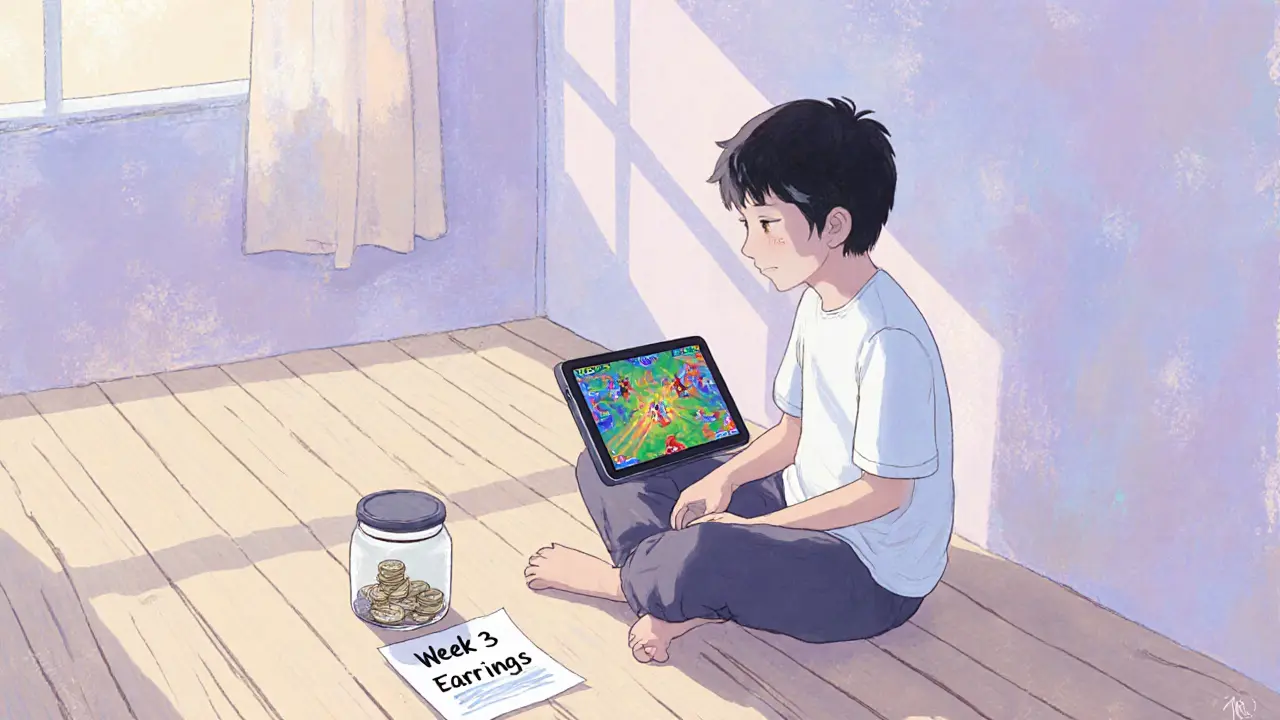
Play-to-Earn Earnings Calculator
Calculate Your Potential Earnings
Your Earnings Estimate
Daily Earnings: $0.00
Monthly Earnings: $0.00
Break-Even Time: 0 days
ROI After 30 Days: 0.00%
Important Note: Actual earnings vary based on token market volatility, game performance, and skill level. This is a simplified estimate only.
Most people think video games are just a way to pass time. But in 2025, thousands of players in the Philippines, Nigeria, and Vietnam are making their main income from playing games - not just spending money on them. This isn’t a fantasy. It’s play-to-earn gaming, and it’s changing how we see work, money, and digital ownership.
How Play-to-Earn Gaming Actually Works
Play-to-earn (P2E) games don’t just let you play. They pay you. Not with fake points or leaderboard badges, but with real cryptocurrency and NFTs you can sell, trade, or use in other apps. The magic happens because everything inside these games - your character, sword, land, or pet - is a real digital asset stored on a blockchain. That means you own it. Not the game company. Not a server. You.Here’s how it flows: You start by getting an NFT - maybe a Axie, a warrior, or a piece of virtual land. You use that to play. Every battle you win, every quest you complete, every daily login adds up. You earn tokens. Those tokens? They’re like in-game cash, but they trade on crypto exchanges. You can turn them into Bitcoin, Ethereum, or even USD. Some players sell their NFTs for hundreds or thousands of dollars. Others rent them out to new players who can’t afford to buy in.
It’s not magic. It’s code. Smart contracts handle all the payouts automatically. No middleman. No delays. If you earn 50 tokens today, they’re in your wallet by sunset. And because the blockchain is public, everyone can see the rules. No hidden fees. No surprise changes.
The Real Money Behind the Game
You might think game developers are losing money by giving away value. But they’re not. They’re building a business model that grows with every trade.Every time an NFT changes hands - whether it’s a rare sword or a new pet - the original creator gets a cut. Usually 5% to 10%. That means if your Axie sells for $200, the game studio pockets $10. And they get that cut every single time that same Axie is resold. Forever. That’s called a royalty. And it turns every player into a potential salesperson for the game.
That’s why successful P2E games don’t rely on selling NFTs once. They rely on trading volume. The more players trade, the more the studio earns. That’s the opposite of traditional games, where revenue drops after the initial purchase. In P2E, the game keeps making money as long as people keep playing and trading.
Some games even let you stake your tokens. That means locking them up for a while to earn more tokens - like interest in a bank, but on the blockchain. Others let you rent out your NFTs. A player in Brazil might not afford a $500 dragon NFT. But they can rent it for $5 a week. The owner earns passive income. The renter plays and earns. Everyone wins.
Who’s Playing, and Why?
P2E isn’t just for crypto bros in Silicon Valley. It’s thriving in places where wages are low and opportunities are scarce. In the Philippines, players earn more from Axie Infinity in a week than they do from a full-time minimum wage job. In Nigeria, students use P2E earnings to pay for tuition. In Indonesia, entire families run P2E farms - multiple accounts, multiple NFTs, multiple income streams.It’s not just about money, though. It’s about ownership. In traditional games, you buy a skin or a weapon. But if the server shuts down? It’s gone. In P2E, your assets live on the blockchain. Even if the game company disappears, your NFTs still exist. You can still sell them. You can still use them in other games that support the same standard.
And the community? It’s tight-knit. Players form guilds. They share tips. They pool money to buy NFTs and split the profits. Discord servers turn into trading hubs. Telegram groups become job boards for NFT rentals. It’s not just a game. It’s an economy.
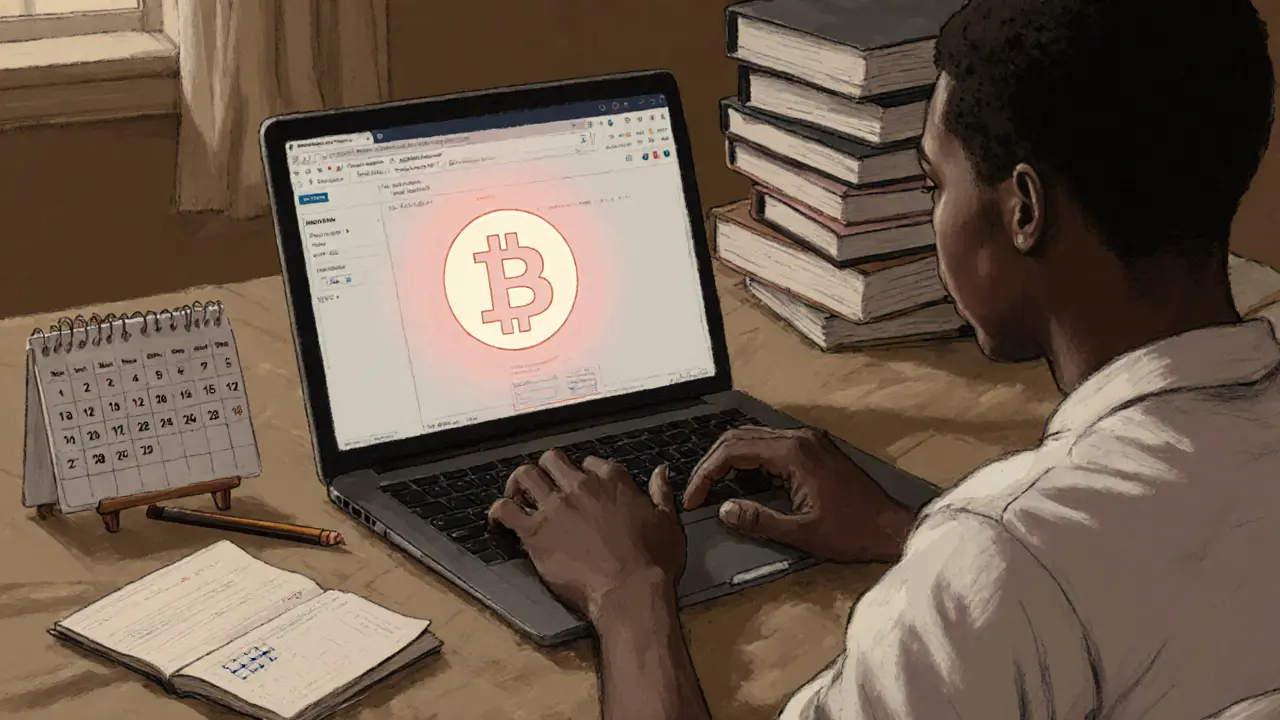
The Catch: It’s Not Free Money
Let’s be clear: P2E isn’t a get-rich-quick scheme. It’s a job. And like any job, it takes work, skill, and strategy.First, you need money to start. Most games require you to buy at least one NFT to play. That can cost anywhere from $50 to $500. If you don’t have that, you can’t play. Some games offer scholarships - where a guild lends you an NFT in exchange for a share of your earnings. But those are competitive.
Second, you need to understand the economy. Token prices swing. NFT values drop. If you buy an NFT at $300 and the market crashes to $150, you’re underwater. You have to know when to sell, when to hold, and when to cut losses. It’s not just about grinding quests. It’s about reading the market.
Third, there’s risk. Many P2E games have failed. Their tokenomics collapsed. Players lost money. The game vanished. That’s why experienced players only invest what they can afford to lose. And they diversify - playing multiple games, holding different tokens, not putting all their eggs in one NFT basket.
And don’t forget the tech side. You need a crypto wallet. You need to understand gas fees. You need to know how to connect your wallet to the game, to marketplaces like OpenSea or Magic Eden, and to DeFi platforms for staking. One wrong click, one phishing link, and your assets are gone. No customer service. No refund. No second chances.
What Makes a P2E Game Last?
Not every P2E game survives. Most die within a year. So what separates the winners from the dead ones?First, gameplay matters. If the game is boring, people stop playing. And if people stop playing, the economy collapses. The best P2E games aren’t just about earning. They’re fun to play. They have deep mechanics, progression systems, and challenges that keep you engaged even if you’re not chasing tokens.
Second, tokenomics must be balanced. Too many tokens in circulation? Inflation hits. Tokens lose value. Players earn less. Too few? People can’t earn enough to stay. The game dies from starvation. The best games adjust rewards over time. They burn tokens. They cap daily earnings. They introduce new ways to spend tokens so demand stays high.
Third, community trust. Players need to believe the game won’t vanish tomorrow. That’s why big names like Illuvium and The Sandbox are gaining traction. They have teams, roadmaps, and real development. They’re not just a whitepaper with a token.
And fourth - and this is critical - the game must have real utility. Not just “collect and sell.” But things like: can you use your NFT in other games? Can you rent it out? Can you use your tokens to buy real-world goods? The more ways your assets connect to the outside world, the more valuable they become.

Where Is This All Going?
By 2031, the P2E market is expected to hit $6.3 billion. That’s not a guess. It’s based on current growth rates and adoption trends. But it’s not just about bigger numbers. It’s about deeper integration.Imagine playing a game where your in-game earnings can pay your phone bill. Or where your NFT character can be used as a profile picture on social media and earns you royalties every time someone uses it. Or where your land in a virtual world hosts real-world events - concerts, art shows, even job interviews.
Some games are already testing this. Decentraland lets you buy virtual land and host events. The Sandbox lets creators build games on top of their NFT land. And new tools are emerging that let you turn your NFTs into collateral for loans.
Regulation is coming. Governments are watching. Australia, the U.S., and the EU are all looking at how to classify NFTs and tokens. Will they be securities? Assets? Goods? That will change how P2E games operate. But the core idea - that players deserve to own and profit from their time - isn’t going away.
How to Get Started (Without Getting Scammed)
If you’re curious, here’s how to start smart:- Start small. Pick a game with low entry cost - like Splinterlands or Thetan Arena. You can play for free with a basic character.
- Learn the wallet. Set up MetaMask or Phantom. Practice sending small amounts of crypto. Learn what gas fees are.
- Join the community. Discord and Telegram are where the real info lives. Ask questions. Don’t trust random DMs.
- Track your earnings. Use a crypto portfolio tracker like Koinly or CoinTracker. Know your ROI.
- Don’t invest more than you can afford to lose. Treat it like a side hustle, not a lottery ticket.
And remember: the best players aren’t the ones with the most NFTs. They’re the ones who understand the game, the market, and themselves.
Can you really make a living from play-to-earn games?
Yes, but it’s not easy. Players in the Philippines, Nigeria, and Indonesia have turned P2E gaming into their primary income source. Some earn $300-$800 per month by playing 6-8 hours a day. But that requires mastering the game’s economy, managing NFTs, timing trades, and staying active. It’s a job - not a side hustle. Most people don’t make enough to live on, especially in high-cost countries.
Do I need to buy NFTs to start playing?
Not always. Some games like Splinterlands and Thetan Arena let you play for free with basic characters. But to earn significantly, you usually need better NFTs - and those cost money. Some guilds offer scholarships where they lend you an NFT in exchange for a percentage of your earnings. That’s the safest way to start without spending upfront.
Are P2E games a scam?
Some are. Many early P2E games were designed to pump and dump - raise money from new players, then vanish. But legitimate games like Axie Infinity, Illuvium, and The Sandbox have real teams, active development, and transparent tokenomics. Look for games with public roadmaps, audited smart contracts, and active communities. If the team is anonymous or the website looks like a template, walk away.
What’s the biggest risk in play-to-earn gaming?
The biggest risk isn’t losing a game - it’s losing your crypto wallet. If you lose your private key or fall for a phishing scam, your NFTs and tokens are gone forever. There’s no reset button. No customer support. No recovery. Always use a hardware wallet for anything over $500. Never click links in DMs. And never share your seed phrase.
How do P2E games make money if they’re paying players?
They earn from transaction fees. Every time an NFT is sold, the original creator gets a royalty - usually 5-10%. So if you buy an NFT for $200 and later sell it for $300, the game studio gets $15-$30. The more trading happens, the more they make. They also earn from selling initial NFTs, in-game purchases, and premium subscriptions. Their revenue grows with player activity, not just initial sales.
Will governments shut down P2E games?
Regulation is coming, but outright bans are unlikely. Countries like Singapore, Switzerland, and Australia are creating frameworks for digital assets. The U.S. is still unclear, but the SEC is focused on tokens that act like securities - not NFTs used for gameplay. P2E games that focus on fun and ownership, not speculation, are more likely to survive. The key is transparency and compliance.
Is play-to-earn better than traditional gaming?
It’s different, not better. Traditional games offer polished graphics, deep stories, and no financial risk. P2E games offer ownership, earning potential, and community-driven economies - but come with volatility, complexity, and risk. If you want pure entertainment, stick to traditional games. If you want to turn play into income, P2E gives you that chance - but treat it like a business, not a game.

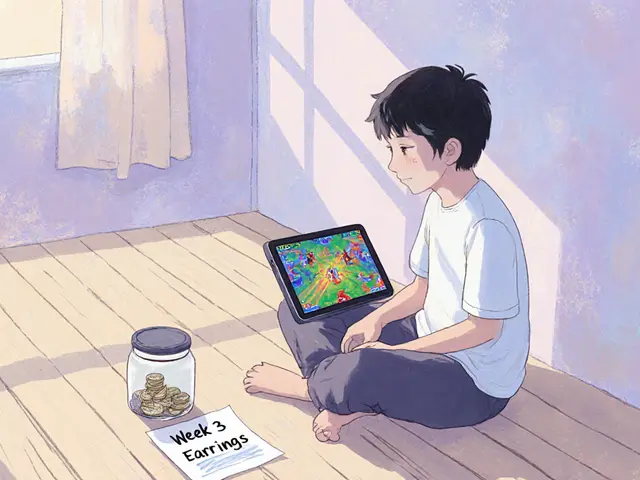


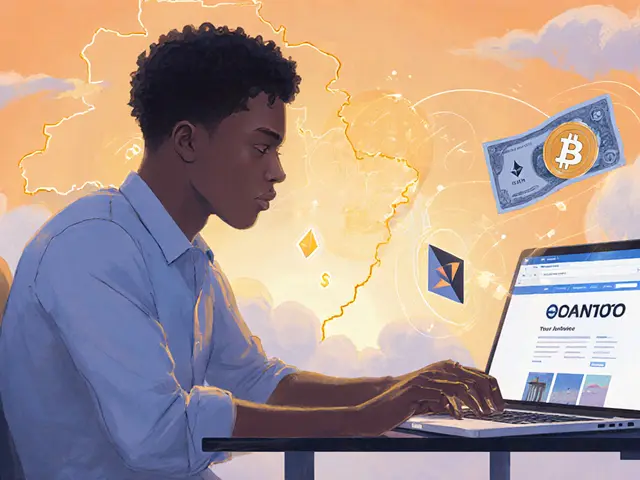

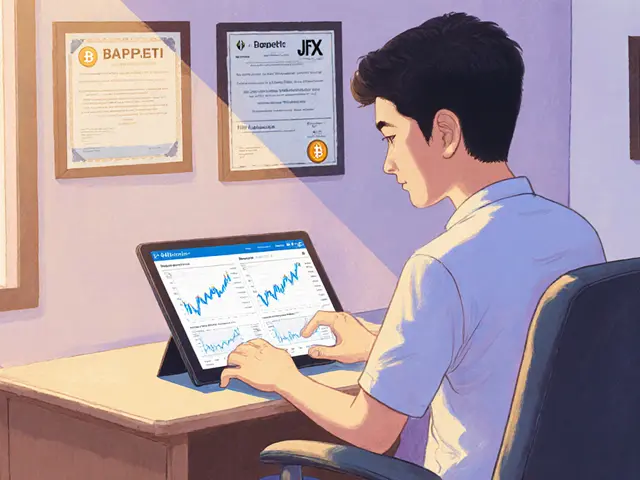
It's fascinating how blockchain turns play into property. For the first time, time spent in digital spaces has tangible, transferable value - not just as labor, but as ownership. This isn't just economics; it's a redefinition of digital personhood.
Yeah right. 😏 All these 'earn while playing' games are just Ponzi schemes with better graphics. The devs get rich, you get a $20 NFT that's worthless in 6 months. And don't even get me started on gas fees eating your profits. This whole thing is a crypto bubble dressed up as a revolution.
Let me guess - you're one of those people who think America should just hand out crypto to everyone so they can 'play games for money'? This is why our economy is collapsing. You don't earn income by clicking buttons. You earn it by working. Real work. Not some digital fantasyland where people think their pixel sword is worth more than their degree.
While the model presents compelling economic innovation, it is imperative to approach it with both enthusiasm and caution. The democratization of digital asset ownership is historically significant; however, the absence of regulatory clarity, combined with the volatility of tokenomics, necessitates a disciplined, research-driven methodology for participation. One must treat this not as entertainment, but as a nascent financial ecosystem requiring due diligence.
Oh please. You're telling me a Filipino teen grinding Axies for $400/month is 'economically empowered'? That's not liberation - it's exploitation dressed up in blockchain glitter. The real winners? The American VCs who funded the game and sold their NFTs before the crash. The players? Just digital serfs with wallets.
Wait… so you're saying… people… are… actually… making… a… living… from… playing… video… games…?!!?!!? That's… not… possible… right? I mean… what… about… taxes…? And… insurance…? And… retirement…? And… health… care…? This… is… just… a… scam… isn't… it…?!
bro i started playing splinterlands last month and now i earn 15k inr per month! no cap! i use metamask and my wallet is safe. i just play 3 hrs daily and farm daily quests. the game is so fun and the community is lit! my friend also joined and now we both run 5 accounts! crypto is the future man!
Okay so I just wanna say - this isn’t just a game. This is a movement. A revolution. A seismic shift in human history. I mean, think about it - for centuries, people have been told that play is frivolous, that leisure is wasted time. But now? Now, you can literally turn your joy into income. I cried the first time I converted my tokens to USD. I was in my pajamas at 2 a.m. eating ramen. And I thought - ‘this is it. This is my life now.’ I’ve never felt so alive. I’ve never felt so free. I’ve never felt so… validated. And I’m not even mad about the gas fees anymore. I just… I just want everyone to feel this. Everyone. Please. Just… believe.
There’s real potential here, but the biggest barrier isn’t tech - it’s access. Not everyone can afford a $300 NFT. The scholarship model is brilliant, but it’s still too limited. We need more free-to-play options with fair earning curves. And we need better education - not just on wallets, but on risk management. This could change lives, but only if we make it inclusive, not exclusive.
Interesting. But let’s be real - this is just a new way for Silicon Valley to extract value from the Global South. You think a kid in Manila is playing because they love the game? No. They’re playing because their minimum wage is $5/day. This isn’t empowerment. It’s economic colonialism with a blockchain logo.
I used to be excited about this. Now I just feel… empty. Every time I see another ‘earn $500/month playing games’ post, I wonder - what did we lose? The joy of play? The idea that games are meant to be escapes? Now everything has a price tag. Even fun. And I miss the old days.
OMG GUYS I JUST LOST MY WHOLE PORTFOLIO BECAUSE I CLICKED A LINK IN A DM AND NOW I’M BROKE AND MY GIRLFRIEND LEFT ME AND MY MOM SAID I SHOULD’VE BEEN A DOCTOR AND NOW I’M JUST A WALKING TROUBLE AND I HATE EVERYTHING AND WHY DID I EVER TRUST THE INTERNET
This phenomenon represents a profound epistemic rupture - the dissolution of the traditional labor-capital binary. When players become asset-holders, and asset-holders become participants in governance, we’re witnessing the birth of a post-neoliberal digital subjectivity. The blockchain doesn’t just record transactions - it enshrines a new social contract. The question isn’t whether P2E is viable - it’s whether our institutions are ready to recognize it as legitimate.
So let me get this straight - you’re telling me that in 2025, people are choosing to play video games instead of getting real jobs? And you think that’s progress? I mean, I get the tech is cool and all but this feels like we’ve collectively lost our minds. I just want to go back to when games were fun and not a second job with a side of crypto anxiety
If you’re reading this and thinking about trying P2E - start small. Seriously. Don’t buy an NFT today. Play the free version first. Learn the mechanics. Join the Discord. Watch how the market moves. Then, when you’re ready, invest $20 - not $200. Treat it like learning to cook. You don’t buy a $500 stove on day one. You start with a pot. And you’ll be amazed how far that takes you.
Love this thread. I’m from India and my cousin in the Philippines plays Axie every day. He’s paying for his sister’s college with it. Meanwhile, I’m stuck in a 9-5 with Zoom fatigue. I’m not jealous - I’m inspired. Maybe we need to stop seeing games as ‘wasteful’ and start seeing them as untapped labor markets. The future’s not just in coding - it’s in clicking.
Wait - so you’re saying… people… are… actually… trusting… decentralized… systems… over… banks… and… governments…? And… you… think… that’s… wise…?!!?!!? This is… how… the… economy… collapses…! Who… is… auditing… these… contracts…? Who… is… protecting… the… players…? This… is… chaos… dressed… as… innovation…!
I’ve been following this space for years. I’ve seen games rise and fall. I’ve watched players lose everything. But I’ve also seen families in Vietnam go from eating one meal a day to sending their kids to school because of P2E. I don’t romanticize it - I just honor it. If this helps even one person build a better life, then it’s worth the noise.
This is a Western capitalist trap disguised as decentralization. The blockchain is not a tool of liberation - it is a new mechanism of control. The games are designed to addict you, then extract your labor. The ‘scholarships’? Just a way to recruit indentured digital workers. Don’t be fooled. This is not progress - it is surveillance capitalism with a better UI.
So you’re telling me the solution to global poverty is… video games? That’s the best you’ve got? I mean, sure, I’ll believe it when I see a Wall Street Journal headline: ‘Fed to Launch P2E Stimulus Program’.
Bro you all are missing the point the real game is not the game its the tokenomics you need to understand the inflation curve and the burn rate and the staking APY and the liquidity pools and the rug pull indicators and the whale wallets and the market sentiment and the social media hype cycle and the team doxxing status and the audit report and the community engagement score and the roadmap execution rate and the discord activity and the twitter followers and the github commits and the github commits and the github commits
Let’s remember: this isn’t about who’s right or wrong. It’s about people finding dignity in unexpected places. Maybe the system’s flawed. Maybe it’s volatile. But for someone who’s never had a chance - this is a door. Let’s not slam it shut because it’s messy. Let’s help make it safer.
That’s the heart of it, isn’t it? The system is flawed, but the desire to be rewarded for your time, your skill, your attention - that’s not flawed. That’s human. The question isn’t whether P2E is perfect. It’s whether we’re willing to build something better than the alternatives - where labor is invisible, and value is extracted without consent.